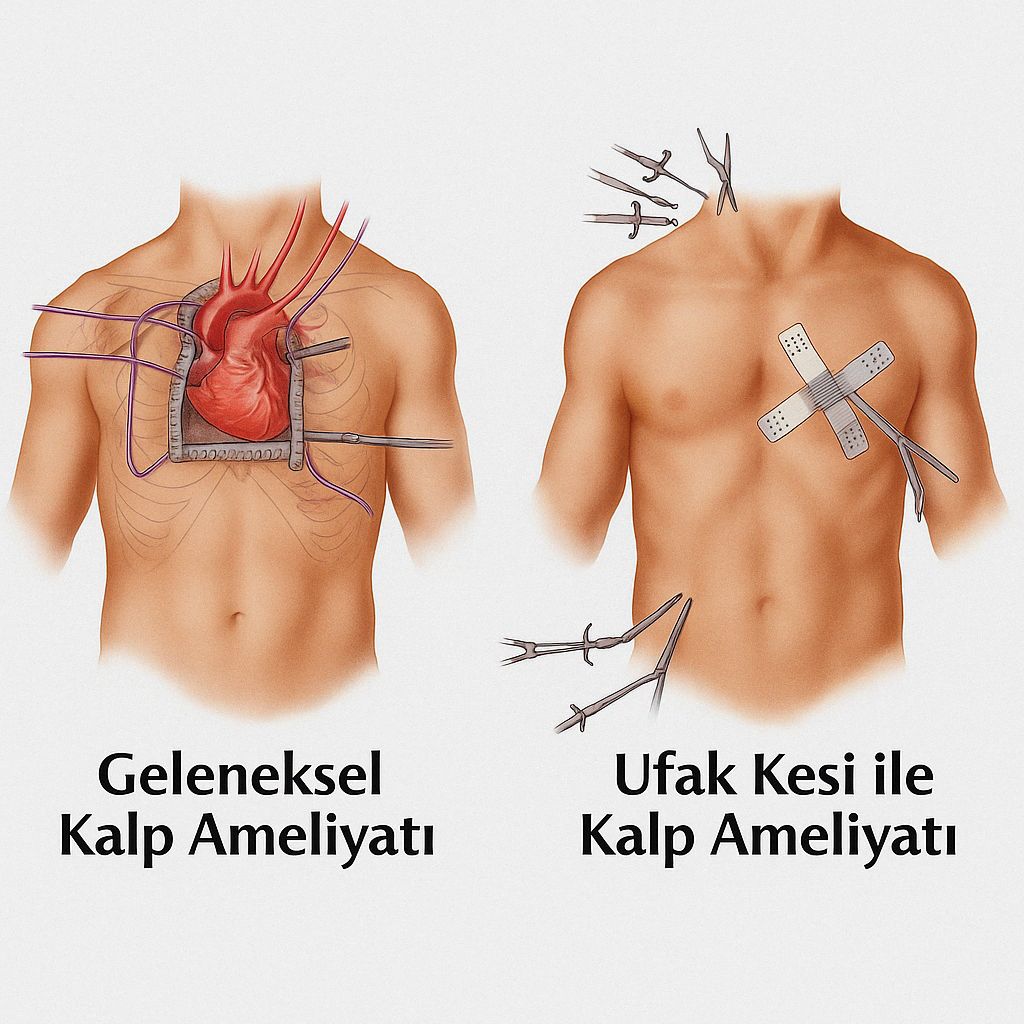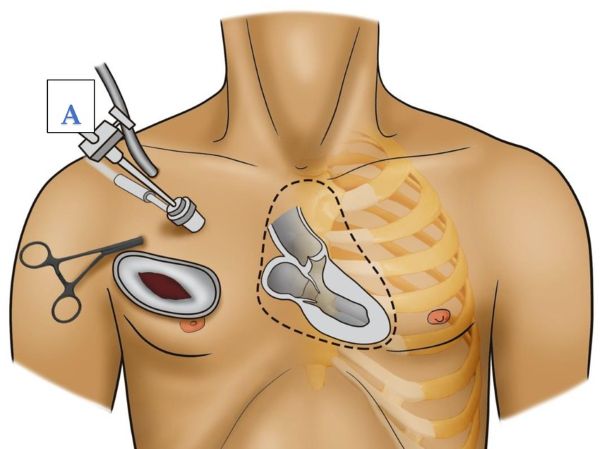Heart surgeries performed with a small incision are modern surgical methods that offer patients less pain, faster recovery, and aesthetic advantages. Traditional heart surgeries are based on accessing the heart by cutting through the middle of the breastbone. This incision, called a sternotomy in medical terms, has been the foundation of heart surgery for many years. It still remains the most commonly applied surgical approach worldwide. However, thanks to advancements in technology, some heart surgeries can now be performed with smaller incisions, without cutting the breastbone and through the ribs. These new methods are generally called minimally invasive heart surgery.
What is Minimally Invasive Heart Surgery?
Minimally invasive heart surgery encompasses surgical techniques performed using small incisions instead of large ones to access the heart. With this method, the surgeon reaches the heart through the side of the chest between the ribs without completely cutting the breastbone. This approach is both aesthetically more advantageous and accelerates the patient’s recovery process.
However, it’s important to emphasize this: Heart surgery is not cosmetic surgery. The purpose of the surgery is to extend the patient’s lifespan, eliminate the risk of sudden death, and improve quality of life. Small incisions or aesthetic advantages should not take precedence over the primary goal of surgery. Therefore, surgical safety and patient health should be the top priority when deciding which technique to apply.

In Which Cases Can Small Incision Surgeries Be Applied?
Minimally invasive techniques are successfully used in some heart surgeries. This method is particularly effective in heart valve diseases. Mitral valve and, in some cases, aortic valve surgery can be successfully performed with small incisions made between the ribs.
Robotic and Endoscopic Support
Thanks to robotic and endoscopic technologies, the internal structures of the heart can now be visualized in high resolution. This allows the surgeon to have as wide a field of view as in the classical method. If the time the heart needs to remain connected to the heart-lung machine does not extend and full surgical control can be maintained, this method offers a significant advantage.
Limitations of Small Incision Surgeries
In coronary bypass surgery, which is the most commonly performed heart surgery, the use of minimally invasive methods is more limited. This method is not suitable for every patient. Factors such as the condition of the heart vessels, the number and location of blockages should be evaluated in detail. In an unsuitable patient, a minimally invasive approach can prolong the surgery time and increase the risk.
Therefore, small incisions cannot be applied to every patient. The decision should be made considering the surgeon’s experience, technological infrastructure, and the patient’s individual characteristics.
Minimally Invasive Methods in Aortic Aneurysm
Closed methods can now be applied even in aortic aneurysm surgery, one of the riskiest operations in cardiovascular surgery. Especially for abdominal aortic aneurysms located in the abdominal region, the endovascular repair (EVAR) method developed provides great advantages over classical surgery.
What is the EVAR Method?
In interventions performed with the EVAR method, a stent-graft is placed by entering through the vascular route from the groin area, and the aneurysm is effectively isolated. The biggest advantage of this method is the very short hospital stay. Generally, discharge becomes possible within 1-2 days. Additionally, patients can return to their normal lives much sooner.
Of course, this method is not suitable for every patient either. Suitability for EVAR is evaluated with a detailed tomographic angiography.
Minimally invasive heart surgery has become a more frequently preferred method in recent years, increasing patient comfort. However, this technique may not be suitable for every patient. Correct patient selection and surgical planning are of great importance to avoid increasing surgical risk.
Heart surgeries with small incisions, when applied to the right patient group, are a valuable alternative that improves quality of life, provides aesthetic advantages, and offers a more comfortable recovery process. However, the aim of surgery should always be to ensure the patient’s safety and healthy recovery.

